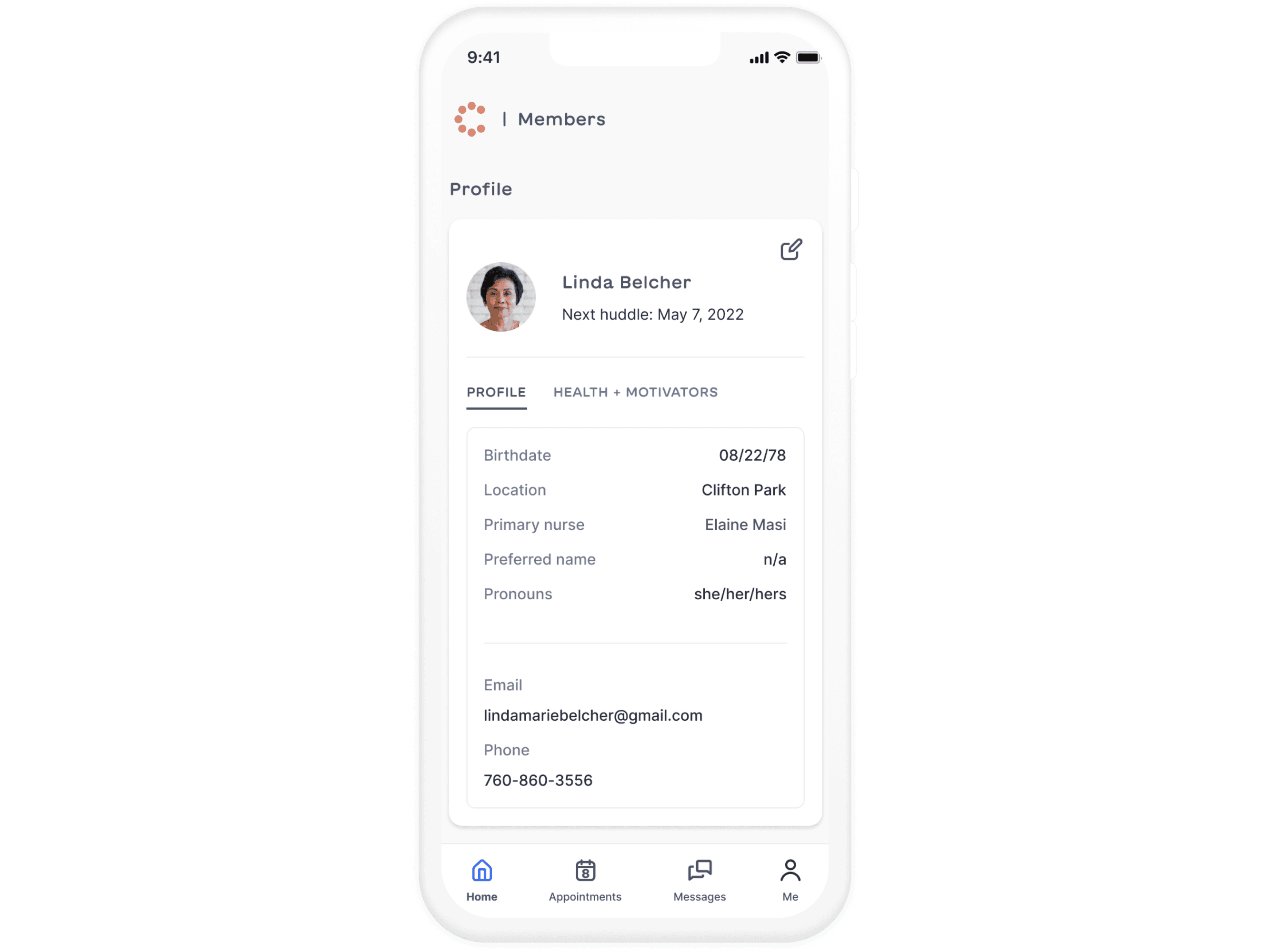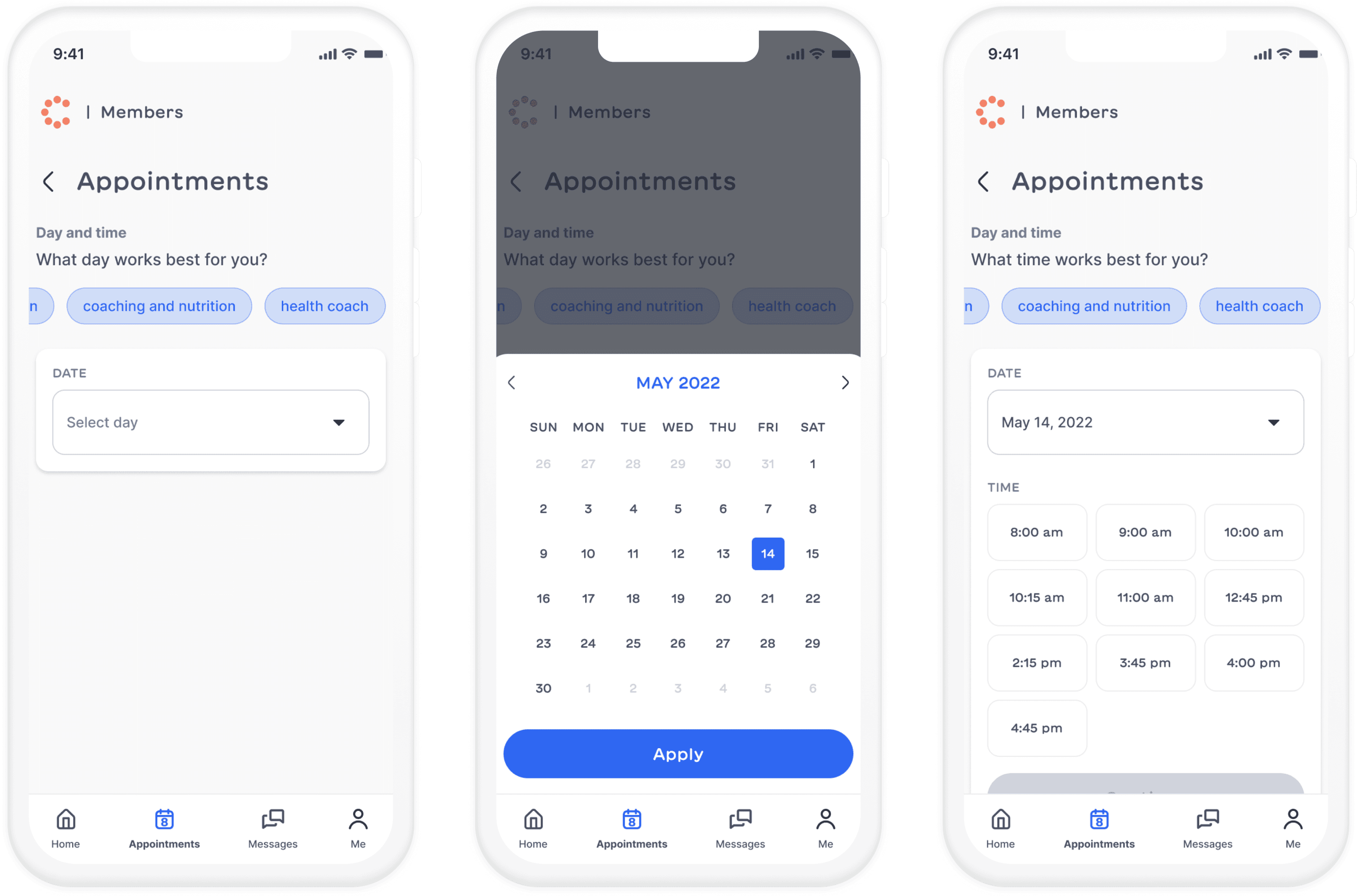Member Portal
The Circulo membership portal that enabled onboarding, cut clinic wait times by 33%, and increased new membership signups from 0 to 80.
Problem
Circulo’s patient onboarding process was entirely manual, leading to long in-clinic wait times and incomplete health histories during visits. New members often spent 20–30 minutes filling out paper forms before seeing a provider, which limited appointment quality and created inefficiencies for staff.
Our research aimed to:
Understand the barriers patients faced during onboarding and appointment scheduling.
Evaluate the digital literacy and accessibility needs of Circulo’s Medicare population.
Test whether an online portal could simplify signups, reduce wait times, and improve the overall patient experience.

Solution
We designed and launched Circulo’s Membership Portal, a web-based and mobile-friendly tool that enabled patients to onboard before their first visit. The portal allowed users to complete health questionnaires, schedule appointments, and securely communicate with their providers—all while mirroring the comfort and modernity of Circulo’s in-person clinics.

Project Background
Circulo’s mission is to deliver compassionate, accessible healthcare for seniors through a seamless blend of technology and hospitality.
Before the Membership Portal, most new patients were introduced to Circulo through in-person enrollment. This manual process involved multiple paper forms, redundant questions, and staff-led data entry—leading to delays, frustration, and scheduling errors.
The Product and Design teams set out to create a self-service digital experience that would both reduce clinic congestion and enhance patient autonomy.

Core Features
We used a human-centered research approach, combining qualitative and quantitative methods to understand user needs and validate the portal’s usability:
Stakeholder Workshops: Collaborated with physicians, nurses, and patient care coordinators to map the current intake workflow.
User Interviews: Conducted 12 interviews with Medicare-eligible patients to identify digital barriers and emotional pain points around technology use.
Usability Testing: Ran three iterative rounds of moderated testing with prototypes to measure task success for registration, scheduling, and form completion.
Surveys: Collected post-launch feedback from patients and staff to measure satisfaction and impact on clinic operations.Personalized Patient Profiles
Profiles are designed to include relevant health information and easy navigation for users of all comfort levels with technology.
Usability Test Screens

Mobile-Friendly Appointment Scheduling
A streamlined scheduling system with larger clickable areas and clear CTAs, allowing patients to efficiently book appointments from any device.

Online Questionnaires
Patients could complete required health surveys prior to their visit, reducing on-site appointment times and enabling PCPs to review histories in advance.

Research Plan & Implementation
Research participants were drawn from Circulo’s pilot clinic locations and represented a range of ages, tech familiarity, and accessibility needs.
Sessions lasted 30–60 minutes and focused on identifying friction points and assessing comprehension of key actions.
Interview & Testing Topics:
Comfort level with online medical tools
Clarity of sign-up and verification process
Ease of form completion and navigation
Visual accessibility (font size, contrast, button spacing)
Overall satisfaction with scheduling flow and confirmation emails
Insights were synthesized in Miro and presented through a journey map highlighting patient touchpoints and emotional states throughout onboarding.
Key Results & Takeaways
Findings highlighted several critical design opportunities:
Patients valued simplicity and reassurance over advanced functionality.
Accessibility improvements—like larger buttons, clearer hierarchy, and minimal text—significantly boosted confidence in form completion.
Medical staff wanted pre-visit data visibility so they could review patient histories before appointments.
A need emerged for real-time scheduling visibility across clinics.
Based on these insights, the final portal design introduced:
Personalized Patient Profiles with demographic and medical information in one place.
Mobile-Friendly Scheduling, using large tap targets and clear next steps for patients of all tech comfort levels.
Pre-Visit Questionnaires, completed at home to save time and allow PCPs to prepare for visits.
Automated Reminders to reduce no-shows and improve adherence to care plans.

